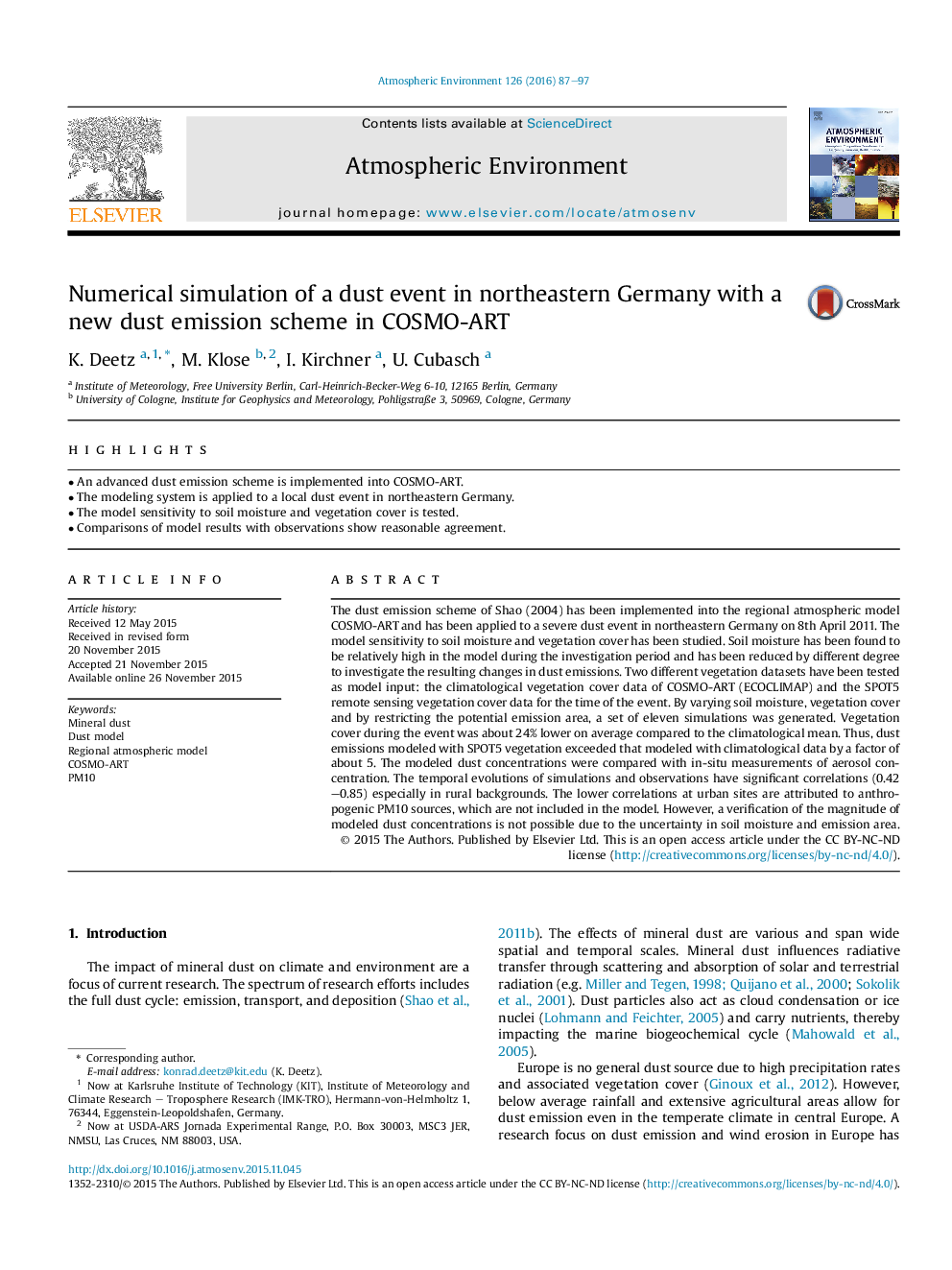| Article ID | Journal | Published Year | Pages | File Type |
|---|---|---|---|---|
| 6337164 | Atmospheric Environment | 2016 | 11 Pages |
Abstract
The dust emission scheme of Shao (2004) has been implemented into the regional atmospheric model COSMO-ART and has been applied to a severe dust event in northeastern Germany on 8th April 2011. The model sensitivity to soil moisture and vegetation cover has been studied. Soil moisture has been found to be relatively high in the model during the investigation period and has been reduced by different degree to investigate the resulting changes in dust emissions. Two different vegetation datasets have been tested as model input: the climatological vegetation cover data of COSMO-ART (ECOCLIMAP) and the SPOT5 remote sensing vegetation cover data for the time of the event. By varying soil moisture, vegetation cover and by restricting the potential emission area, a set of eleven simulations was generated. Vegetation cover during the event was about 24% lower on average compared to the climatological mean. Thus, dust emissions modeled with SPOT5 vegetation exceeded that modeled with climatological data by a factor of about 5. The modeled dust concentrations were compared with in-situ measurements of aerosol concentration. The temporal evolutions of simulations and observations have significant correlations (0.42-0.85) especially in rural backgrounds. The lower correlations at urban sites are attributed to anthropogenic PM10 sources, which are not included in the model. However, a verification of the magnitude of modeled dust concentrations is not possible due to the uncertainty in soil moisture and emission area.
Related Topics
Physical Sciences and Engineering
Earth and Planetary Sciences
Atmospheric Science
Authors
K. Deetz, M. Klose, I. Kirchner, U. Cubasch,
